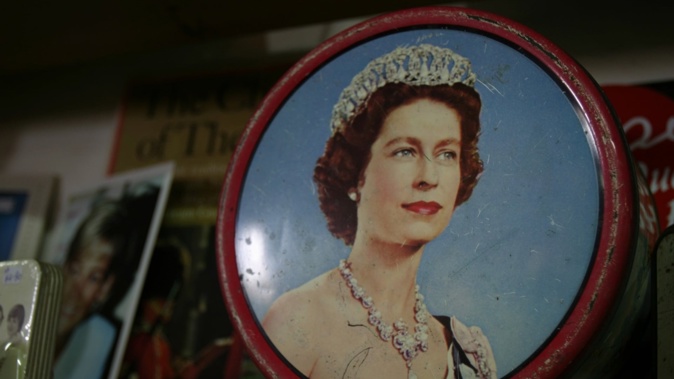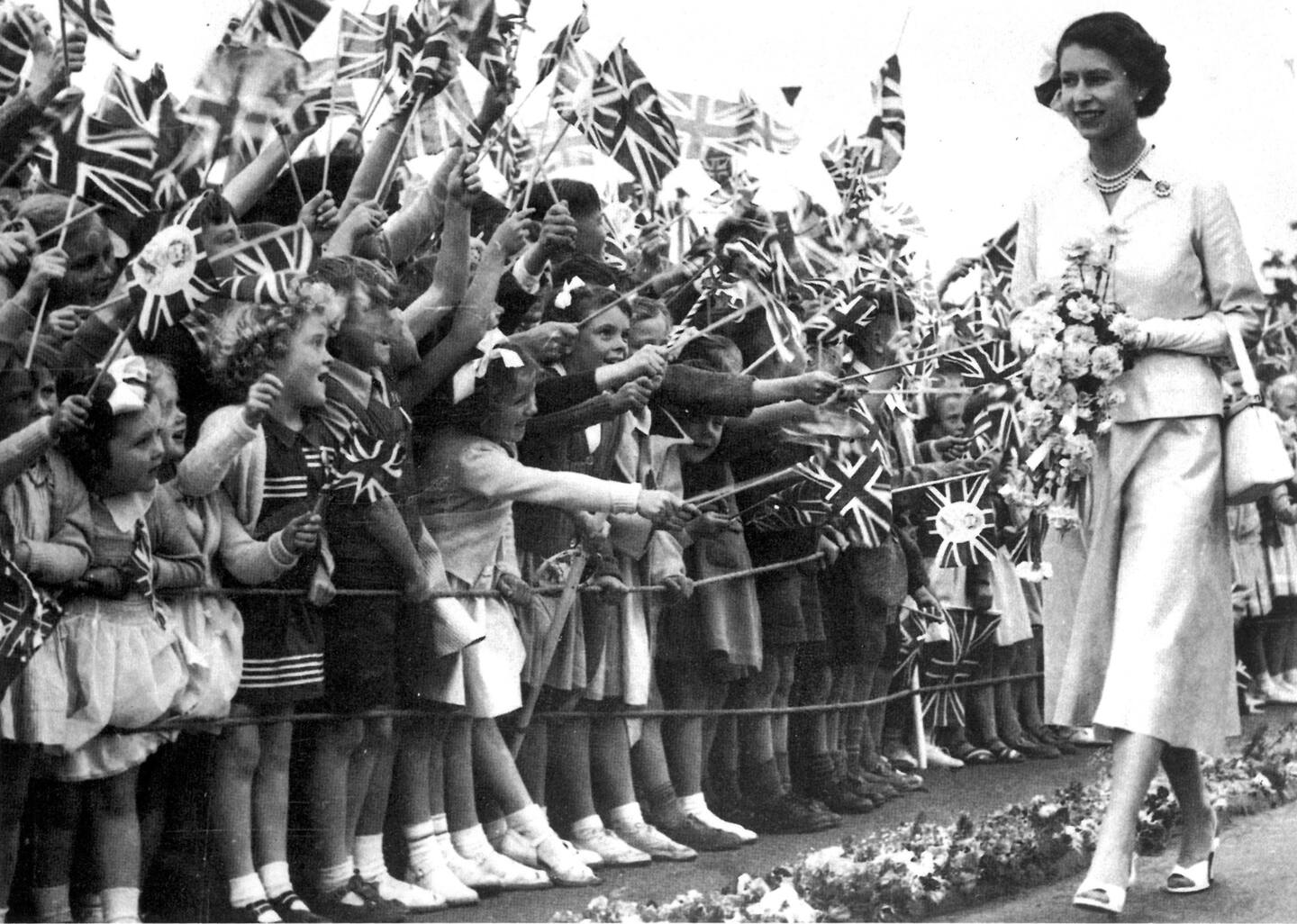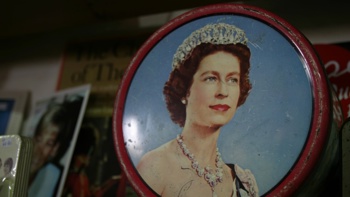
She was seen as the Queen of every man, woman, child and sheep in New Zealand when she was crowned in 1953, closer than cleanliness to Godliness, an English rose blooming red in the desert of New Zealand life.
We loved her. We had no choice in the matter. She was everywhere, on the nation's coins, its stamps, its tea towels. She seemed good and kind and poised.
The royal tour in the summer of 1953-54 burrowed deep into the New Zealand soul, and her itinerary (46 towns, 110 functions) confirmed our proud reputation as the most boring country in the world – she was given a tour of Wattie's canneries in Hastings, and suffered luncheon with the Canterbury Chamber of Commerce.
Queen Elizabeth II and her subjects were a good match. She was new to the throne, we were entering a new post-war world. She advertised the innocence of Empire, we advertised the innocence of colonialism. Like all advertising, it was false.
She was seen as the Queen of the New Zealand family during the 1960s. In addition to her various duties such as Captain-General of the Royal New Zealand Armoured Corps and Colonel-in-Chief of the Countess of Ranfurly's Own Auckland Regiment, she was the mother of four children.
 Excited children cheer at a smiling Queen Elizabeth at a children's gathering at Wellington's Athletic Park in January 1954. Photo / File
Excited children cheer at a smiling Queen Elizabeth at a children's gathering at Wellington's Athletic Park in January 1954. Photo / File
Her royal visit of 1963 was only 12 days: that made sense, she had to get back to the kids. We kept in touch with her thanks to the Woman's Weekly. There were adorable photos of her playing with Charles, Anne, Andrew and Edward. We loved her.
She seemed homely and cheerful and gentle. She kept corgis. Her husband was tall. Long hair, cannabis, and political ideologies began to creep into New Zealand, and were viewed as a cancer by an aghast society who cleaved to the RSA, Rotary, and the Ranfurly Shield; the Queen acted as a restraining wall, she was on the side of conservatism and decency – her face smiled from the lids of the country's biscuit tins.
Everything would be all right. She was milk, no sugar; she was the Christmas message; she was the subject of the song we all knew by heart. Long may she reign over us, etc.
 The Queen and Prince Philip visit Tauranga in 1963. Photo / File
The Queen and Prince Philip visit Tauranga in 1963. Photo / File
She was seen in New Zealand during the 1970s as unequivocally our Queen, our Sovereign, our Defender of the Faith, for the final time.
This was the end of her golden weather, the last of her halcyon days. Social change and the sins of her children had yet to catch up with her. HRH made three royal visits to New Zealand that decade, as though she were making the most of it, clinging on to the old magic and the reliable loyalty of her subjects - many were still intent on establishing New Zealand as the most boring country in the world.
She came in 1970 to attend celebrations connected with the bicentenary of Captain Cook's first voyage to New Zealand. As an affirmation of the white man's conquest of indigenous peoples, it read the room – this was before Bastion Point, before Whina Cooper's Land March.
All we wanted was a royal to sit and nod, snip a ribbon, and put up with it. You imagined Prince Philip hating every minute. Not, surely, the Queen; she seemed patient and tolerant and sensible. We liked her.
 Queen Elizabeth II and the Duke of Edinburgh at Ship Cove during the royal tour of New Zealand, March 18, 1970. Photo / Getty Images
Queen Elizabeth II and the Duke of Edinburgh at Ship Cove during the royal tour of New Zealand, March 18, 1970. Photo / Getty Images
She was replaced in public affection in 1980s New Zealand by the wondrous Diana Spencer, her son's virgin bride, a sad-eyed lady of the high life, a fan of Barbara Cartland's romance novels and Hello by Lionel Ritchie, doing her level best to endure life as the wife of an Eeyore who ran hot (for Camilla) and cold (for Diana).
Lady Di was everywhere. She seemed gracious and vulnerable and sincere. We loved her, but we had a choice; this wasn't about the machinery of the industrial royal complex beating us into submission, this was about something so few royals ever had – charisma. You could tell that the Windsor royals thought of charisma as something distasteful.
It was non-U. They spent the decade in the background, sour in-laws and detached heads of state, tearing themselves away from their favourite TV shows (The Bill, Coronation St) to perform royal duties. They came to New Zealand in 1981 and 1986. No one noticed.
She was seen in New Zealand during the 1990s as a Queen hanging on to the monarchy by her fingernails. The year 1992 was her annus horribilis announcement – the collapse of three of her children's marriages, Windsor Castle wrecked by fire – but she said something else in that speech that was more revealing.
"I, like Queen Victoria, have always been a believer in that old maxim 'moderation in all things'."
But that was out of step with frisky, republican-flirting New Zealand, which was off its head on Ecstasy and voting in Nandor Tanczos. We had got interesting. We gave the world Rachel Hunter.
But there was the Queen, "a muffin-faced granny" as Paul Theroux described her in his 1996 novel My Other Life, dithering whether or not to lower the flags at Buckingham Palace to honour the death of Diana. We liked her a little less that decade.
She was last seen in New Zealand in 2002. Her plane landed in Wellington on February 25. Some poor soul filed this report for the Herald: "There were a few anxious moments when the door to the aircraft could not be opened because it was blocked by the steps in front of it."
Woah! The suspense! And then what happened? "After officials removed a handrail from the steps, the door was opened." No one remembers this visit.
We loved her again, but it was out of habit. She was no longer Empire; she was nostalgia, kitsch, a bird in a gilded cage. The new millennium in royalty belonged to her grandchildren, Charles and Diana's princelings.
New Zealand had other interests. We were preoccupied at home with the Age of Clark, then the Age of Key, but neither preoccupation was as intense as the Age of Terror. 9/11, WMD, Saddam hanged to death.
What did the Queen have to say about all this? At a state dinner in Wellington, she said, "The deployment of New Zealand support personnel in Afghanistan is further evidence of your willingness to engage with others in bringing stability to troubled areas." No one was listening.
She was neither here nor there as far as New Zealand was concerned in the 2010s. We loved the Queen as seen on The Crown. Claire Foy made her seem foxy and kissy and hot, also powerful.
But a 2012 One News-Colmar Brunton poll showed 58 per cent of people believed the monarchy had little or no relevance to their lives. Just 7 per cent said the Queen remained "extremely relevant".
In 2022, that same 7 per cent wore flags and joined the anti-mandate protest at Parliament. She turned 90 in 2016. An editorial in the Guardian marked the occasion, and reported, "The Queen is said to believe that when the public looks at her they see someone who is honest and prosaic and not in some ways so dissimilar to themselves." Good old Elizabeth.
She was next to godlike in the 2020s – distant, magnificent, a force that had always been with us. Great old age made her as delicate as antique China. She had a goodness about her.
She really was our gracious Queen. She had seen sorrows and disappointments. She had worn the black veil. She had Andrew to put up with.
The story of her years on the throne covered nearly 70 years of the story of New Zealand, from a pleasant outreach of empire to a sometimes seething, sometimes thriving independent nation of people from diverse backgrounds and identities. She was one of the few constant figures in our island story and not once had she personally got caught up in any scandal or wrong-doing.
Advisers and the royal court can only go so far; she was her own success story, thanks to an innate good sense, and her maintenance of a quality even more rare than charisma - dignity. We loved her.
Take your Radio, Podcasts and Music with you









